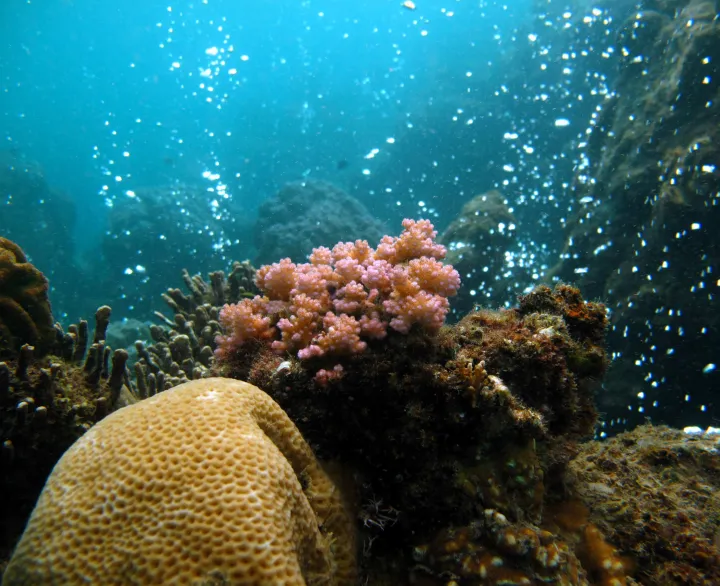Searching for the Ocean Acidification Signal

Over the past century, the pH of the ocean has decreased from 8.2 to 8.1. This doesn’t seem like a lot, but it represents a faster rate than at any time in the last 300 million years. The big question is: how will ocean acidification affect marine ecosystems and organisms?
It’s not an easy question to answer. In the lab, scientists can set up a series of seawater tanks with a variety of pH levels to figure out how different species react to more acidic water, observing the structure of their shells, their metabolism, or their behavior. Or researchers can go to areas with naturally high carbon dioxide and acid levels, such as natural carbon dioxide seeps, to study how those ecosystems are faring. But learning from these experiments is not enough: to really understand how acidification will affect organisms, scientists need to observe it in the field.
There are two main ways to go about this: zoom-in on individual species and see how they are affected by rising acidity, or zoom-out and look at how entire ecosystems are changing. However, neither is particularly easy. The ocean is undergoing so many changes at once—warming water, acidification, nutrient pollution, overfishing, and habitat destruction, to name a few—that it can be difficult to tease out the exact impacts of each.
There was great excitement, and worry, when the first physical evidence of ocean acidification was reported: the shells of sea butterflies in Antarctic waters are dissolving. Sea butterflies (Limacina helicina) are delicate animals. Instead of dragging their bodies around with a muscled foot like snails on land, these mollusks flap their feet like a pair of wings, propelling them and their light aragonite (a semi-stable form of calcium carbonate) shells through the surface waters of the ocean.
Sea butterfly shells are usually smooth, but under a scanning electron microscope, the scientists found patches of weakness where shell had dissolved in the acidic water. The water from this region has higher acidity than most areas of the ocean because cooler, acidic water is drawn from deep down up to the surface by winds. But that doesn’t mean the science isn’t applicable elsewhere; on the contrary, it may just be a sign of things to come.
This is an elegant (albeit troubling) story of how acidification affects ocean organisms: by interfering with chemistry, they build weaker shells, making them more susceptible to predation and disease.
However, not all stories are so clear-cut. In another study, researchers zoomed-out to look at how the number and location of calcium-carbonate shelled plankton species have changed since 1960. Some of them are more widespread, such as foraminifera, which live in more areas than before, and echinoderm larvae, which have moved northward. However, other species are not doing so well: sea butterflies have moved toward either pole and are less common overall, along with their predators the sea angels (Clione limacina, another kind of plankton-dwelling snail). Bivalve (clam) larvae also seem to be doing poorly.
What is driving this change? Because all the organisms rely on calcium carbonate, it’s possible that ocean acidification caused their ranges and abundances to shift. But when the researchers looked for patterns, they found that the increase in ocean temperature had such a strong affect on how these animals distributed themselves, they couldn’t even tell what the effects of ocean acidification were. It’s not unlike hearing a loud and quiet noise at the same time: you probably wouldn’t even know the quiet sound had been made. It doesn’t mean that ocean acidification isn’t having an effect; it is just being drowned out by the profound effects of higher temperatures.
This is why the first sea butterfly story is so powerful: it’s a clear-cut illustration of how ocean acidification affects ocean animals. However, not all evidence will make an easily told story accompanied by beautiful pictures. Sometimes it will be messy and unsure, and the picture may be ugly. But it doesn’t mean acidification isn’t occurring; it’s just that other human impacts are roaring too loudly.



